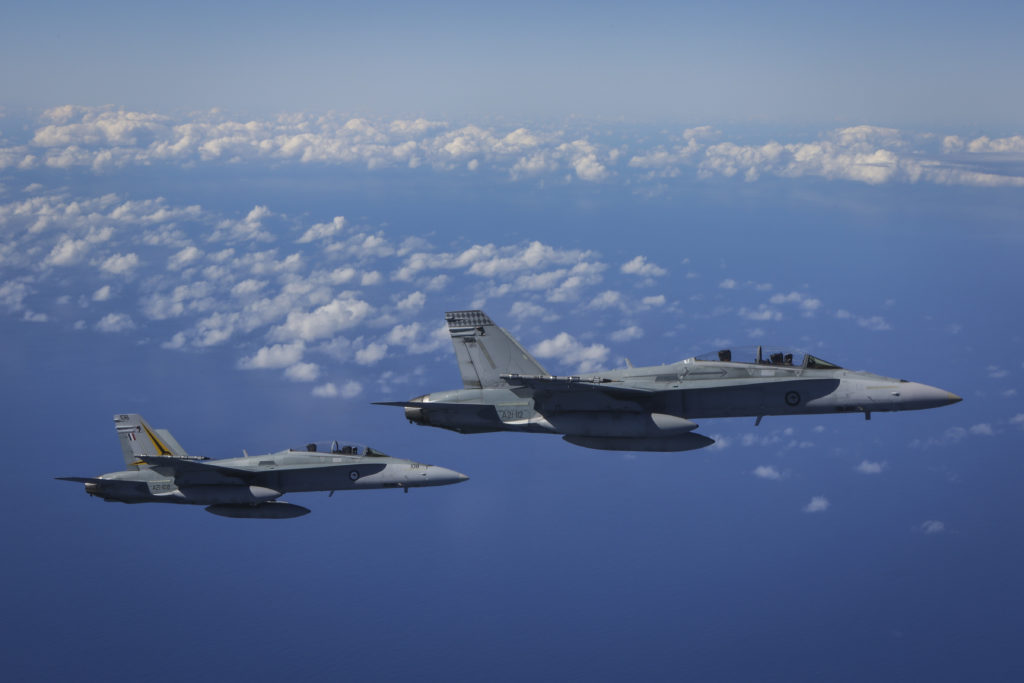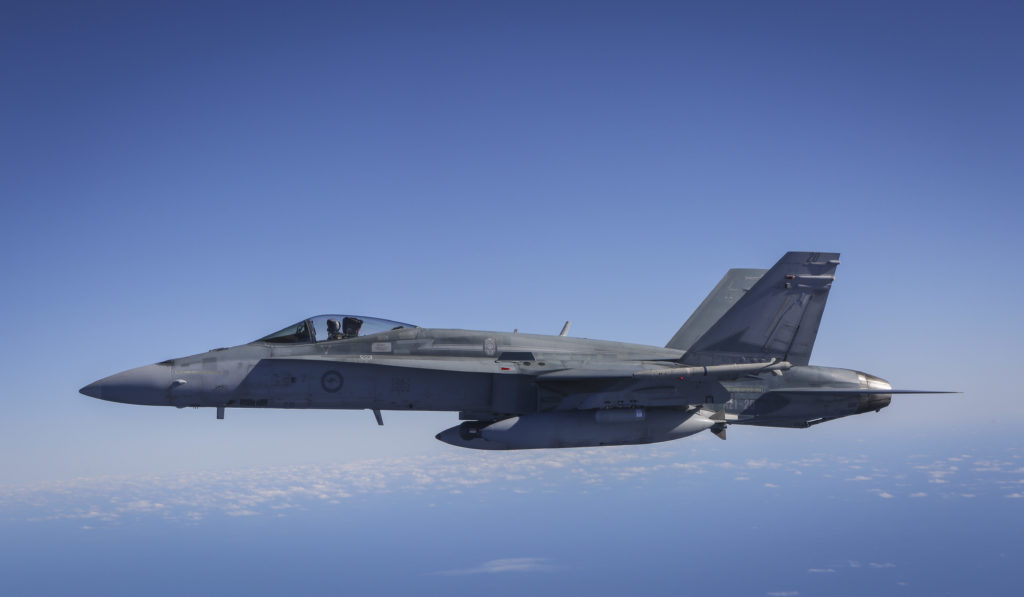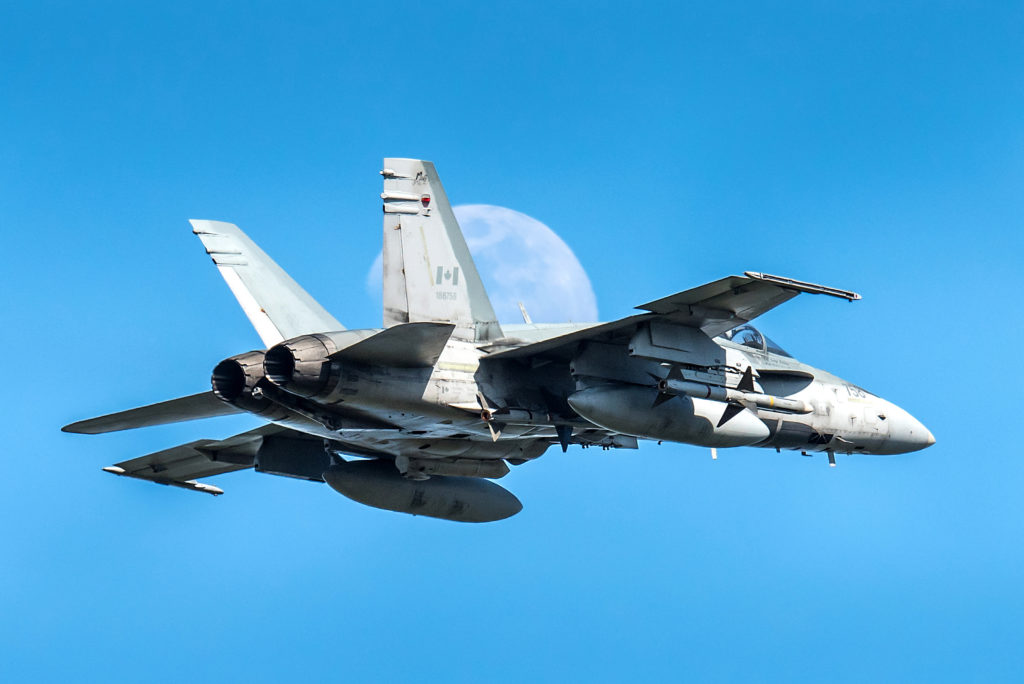Estimated reading time 8 minutes, 35 seconds.
Canada will acquire 18 F/A-18 Hornets and associated spare parts from the Royal Australian Air Force (RAAF) to augment its fleet of CF-188 fighter jets until a replacement is selected and brought into service in 2025.

Government ministers and senior officials confirmed the widely anticipated plan to buy 30-year-old F/A-18A/B legacy Hornets at a press conference on Dec. 12, putting to rest a previous proposal to acquire 18 F/A-18E/F Super Hornets.
The Liberal government had announced in November 2016 a plan to buy the Boeing-built Super Hornets as an interim measure to address an urgent capability gap in the fighter fleet. Although the possible sale was approved by the U.S. State Department in September, the government ceased all discussions with Boeing after the company issued a trade complaint against Montreal-based Bombardier over the sale of the C Series jetliner to Delta Air Lines.
“We have received a formal offer for sale of F-18 aircraft from the government of Australia, which we intend to pursue. And we have received an offer of Super Hornets from the U.S. government, which we intend to let expire,” said Carla Qualtrough, Minister of Public Services and Procurement.
At the same time, the government officially launched a $15 to $19 billion competition to procure 88 aircraft to replace the entire fleet of Royal Canadian Air Force (RCAF) legacy Hornets by inviting interested governments and manufacturers to join a suppliers list.

Qualtrough said the list would allow the government to identify and “share sensitive information” with eligible governments, manufacturers and suppliers able to meet Canada’s needs.
“All suppliers are welcome to participate in the process. No firm is excluded,” she said.
Engagement with industry, which has been ongoing since 2012, is expected to lead to a request for proposals by the spring of 2019, followed by a contract award in 2022. Delivery of the first aircraft would begin in 2025.
While ministers and senior officials stressed an “open and transparent” competition, the government also introduced a new criterion in the evaluation of company’s bid: Its impact on Canadian economic interests, a measure journalists quickly dubbed the “Boeing clause.”
“This new assessment is an incentive for all bidders to contribute positively to Canada’s economy,” said Qualtrough. “When bids are assessed this will mean that bidders responsible for harming Canada’s economic interests will be at a distinct disadvantage compared to bidders who aren’t engaged in detrimental behaviour.”
A government official, speaking on background, acknowledged that “many of the suppliers we deal with on defence procurements have several business lines and global reach. We are seeking to leverage (these) procurements to incentivize favourable economic conduct towards Canada and discourage detrimental actions by commercial suppliers.”
Qualtrough said the assessment, which will be used in future procurements, would be developed through consultations with industry. “All proposals will be subject to the same evaluation criteria.
“The assessment of economic impact will be done at the time of the assessment of the bids,” she added, an indication that much could change between the government and Boeing by 2019.
The eventual CF-188 replacement program will include aircraft, sustainment, infrastructure, and aircrew and maintenance training, and will generate billions for Canadian industry in industrial and technological benefits, said Navdeep Bains, Minister of Innovation, Science and Economic Development, noting that the industrial and technological benefits (ITB) policy has already generated over $40 billion in economic investment.
“If you think that sounds impressive, the economic benefits of these new fighter jets will add significantly to those ITB numbers. This is an enormous investment in a very important sector for us. That’s why our government feels it’s important to do business with trusted partners.”
MINDING THE GAP
The Liberal government has faced pointed criticism on a number of fronts for claiming a capability gap. During Question Period on Tuesday, Conservative Member of Parliament Tony Clement suggested the capability gap does not exist.
“It’s a fairy tale created by Liberals to justify their political decisions,” he said.
Gen Jonathan Vance, Chief of the Defence Staff, countered that criticism during the press conference, claiming the RCAF cannot generate enough mission-ready aircraft to meet North Atlantic Treaty Organization (NATO) and North American Aerospace Defense Command (NORAD) commitments simultaneously.

“The RCAF cannot concurrently meet those obligations now without some form of supplemental capability until a future fighter fleet is in place,” he said. “The acquisition of Australian F-18s is a logical choice.”
Senior officials with the RCAF and Department of National Defence (DND) said the Australian Hornets would “integrate seamlessly” with the CF-188s. Both fleets have similar operating requirements and share comparable training systems, all of which can be supported by existing supply chains and frontline maintainers.
Both countries have cooperated on fleet management and system upgrades, and shared test data, “so we know the jets well,” said the DND official. “We know the state of their aircraft and what modifications may be needed to operate them until the [new] fleet is in place.”
Montreal-based L3 MAS, responsible for maintaining Canada’s CF-188s since they first entered service in the 1980s, has also performed centre barrel replacements on a number of Australian jets as part of a fuselage life extension program.
However, Canada recently began additional structural modifications to ensure the Hornets can operate through 2025, and the Australian F-18s will need to be modified to a similar standard.
The government must still negotiate the final price tag for the 18 jets, modifications and spare parts, but a senior official estimated it would be about one-tenth the cost of 18 Super Hornets and associated mission and weapon systems and support, which the U.S. State Department estimated at US$5.23 billion.
“Specific dollar amounts will be available once we have finalized an agreement with Australia,” he said.
If an agreement is reached, the first Australian Hornets would begin arriving in 2019 and the capability gap would be closed by the end of 2021, two years faster than the planned delivery of the Super Hornets, officials said.
The RCAF had planned to deploy the Super Hornets as a standalone squadron at 4 Wing Cold Lake, Alta. The senior Air Force official said the force structure had not yet been finalized, but would likely involve aircraft being placed across the operational and training squadrons at 4 Wing and 3 Wing Bagotville, Que.
He also acknowledged that more aircraft would mean a need for more pilots and technicians, and that “retention and recruitment efforts were underway to meet this requirement.”









That recycled saga probably, finally, will come to an end eventually.